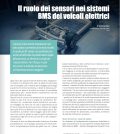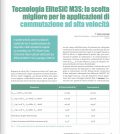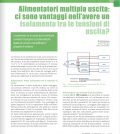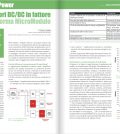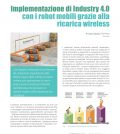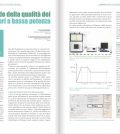2014 Outlook: Power Prevails

Author: Mark Downing, Senior Vice President, Corporate Strategy at Intersil
A number of growth areas have emerged in semiconductors over the last decade – three of the most important are connectivity, mobility and energy efficiency due to the profound impact they have had on how we live, work and communicate. A climate of rapid technological innovation has transformed the consumer electronics market from PC and TV centric to smartphone and tablet centric as devices continue to become more portable, reliably connected and power efficient. These innovations have also transformed the infrastructure market, from central offices to cloud compute farms, and have enabled the realization of the mainstream electric vehicle. And far from getting tired, these areas are accelerating.
In 2014, we expect energy efficiency to be a major driver for semiconductor demand and innovation. In mobile computing, we are seeing the processing power and complexity that used to be the sole domain of the PC move into smaller form factors. This translates to a system design challenge as battery limitations and power demands work in opposition to each other. Increasingly power hungry display technology and the introduction of new battery technologies compound the system design challenges and create opportunity for new solutions. The drive to add intelligence, reduce the footprint and, most importantly, to conserve battery life will continue to be a key system need and an inflection point in 2014 and beyond.
Mobile is not the only area in which power management is taking a leading role. An explosion in cloud computing is driving a significant increase in the demands on computing infrastructure. Server and enterprise storage platforms currently being designed will have as many as 50 voltage rails, creating significant complexity that will require a much higher level of system intelligence to enable efficiency. Power density will also be a primary issue in these systems to preserve precious real estate and reduce system cost.
Given these dynamics, we expect 2014 to be a break-out year for digital power. Digital power has evolved over the last decade, and become lower in cost and much easier to use. 2013 witnessed the introduction of fourth-generation digital power solutions and with system cost parity to comparable analog solutions based on higher integration, the significant size and density advantages, combined with the flexibility inherent in a digitally based solution, digital power now offers real differentiation for customers designing next generation infrastructure equipment. Configuration through a simple GUI compared to writing lines of code and the ability to use off the shelf modules to accelerate design are putting digital power within reach for both high-end and low-end systems, in infrastructure and beyond.
There are many things that are debated in the semiconductor industry – length and frequency of the cycles, return on investment for advanced process nodes, commoditization, consolidation and growth potential. But there are a few things that are undeniable. Battery life is critical to the success of mobile devices. Power efficiency is a key variable in the cost effectiveness and scalability of data transport and storage. And convenience and safety features will drive continued adoption of IC technology in our cars and beyond. The semiconductor pie will continue to grow and create new opportunities for innovators like Intersil to carve out compelling businesses.
Read the complete 2014 Outlook on EONews 570
Contenuti correlati
-
Il ruolo dei sensori nei sistemi BMS dei veicoli elettrici
I sensori di più recente introduzione non solo aiutano a prevenire gli incendi a bordo in modo più efficiente, ma contribuiscono anche ad affrontare la problematica legata all’autonomia, un elemento cruciale per i veicoli elettrici. Per il...
-
Tecnologia EliteSiC M3S: la scelta migliore per le applicazioni di commutazione ad alta velocità
In questo articolo saranno analizzati i risultati dei test di caratterizzazione dei dispositivi e delle simulazioni eseguite su convertitori con PFC (Power Factor Correction) trifase realizzati utilizzando due differenti MOSFET SiC in package TO247-4L Leggi l’articolo completo su...
-
Alimentatori multipla uscita: ci sono vantaggi nell’avere un isolamento tra le tensioni di uscita?
L’isolamento tra le uscite può contribuire a evitare l’insorgere di problematiche legate al rumore e semplificare il progetto di sistema Leggi l’articolo completo su EOPower32
-
Come integrare gli stadi di potenza GaN per sistemi di azionamento di motori BLDC efficienti alimentati a batteria
Questo articolo illustra i vantaggi relativi degli stadi di potenza basati su GaN, illustra le caratteristiche di un dispositivo di EPC, implementato in una topologia a semiponte e spiega come utilizzare i relativi kit di sviluppo per...
-
Ricarica dei veicoli elettrici: alcune domande chiave
Per favorire la diffusione dei veicoli elettrici è necessario assicurare la disponibilità di stazioni di ricarica in grado di garantire una fatturazione equa Leggi l’articolo completo su EOPower32
-
Convertitori DC/DC in fattore di forma MicroModule
Per definizione, piccoli spazi necessitano di convertitori DC/DC di dimensioni ridotte con prestazioni termiche eccellenti. In questo articolo vengono approfondite le problematiche derivanti dall’alimentazione nel caso di applicazioni con severi limiti di spazio e in che modo...
-
Implementazione di Industry 4.0 con i robot mobili grazie alla ricarica wireless
Con la giusta combinazione tra selezione dei componenti, progettazione della bobina e layout della scheda, la ricarica wireless può rappresentare un vero e proprio punto di svolta per l’industria manifatturiera, che può avere un notevole impatto sull’economia...
-
Il collaudo della qualità dei trasformatori a bassa potenza
Attraverso il test di scarica parziale non è solo possibile identificare i guasti nell’isolamento dei trasformatori in una fase iniziale. Questo test è anche una modalità non distruttiva di analisi predittiva che avverte della presenza di guasti...
-
Compromessi e tecnologie per aumentare la densità di potenza
Un aspetto fondamentale per una progettazione di successo è spesso la riduzione delle dimensioni dell’alimentatore. Lo spazio è limitato. La pressione a ottenere di più con minore dispendio di risorse è costante. Più in generale, la miniaturizzazione...
-
OMRON: monitoraggio dei dati in tempo reale per relè senza difetti
OMRON Automotive Electronics Italy (A.E.I.) ha incaricato gli specialisti di i-BELT Data Services per l’aggiornamento della sua linea di produzione dei relè Power e G8HN per il mercato automobilistico. L’upgrade, precisa l’azienda, ha portato al 100% il...


